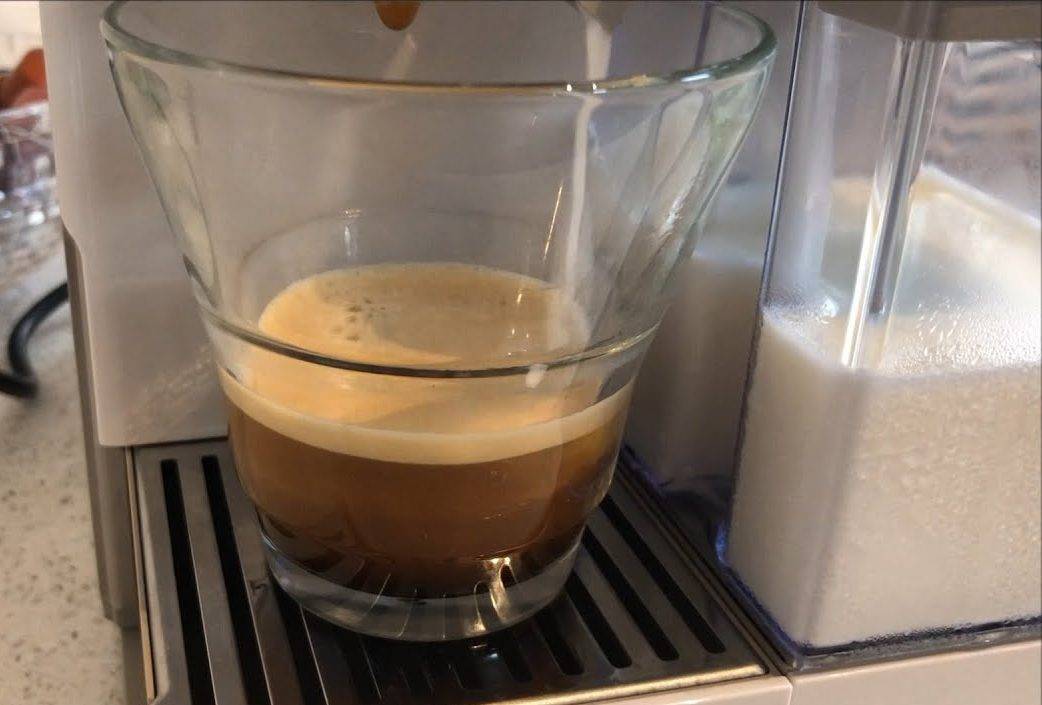What Does Nespresso Intensity Mean?
If you’re new to the world of Nespresso, you may be wondering “What Does Nespresso Intensity mean?” The answer lies in the illustration on the pod box. While this may seem like a confusing number, it just refers to how much coffee is used in the brewing process. Essentially, it refers to the ratio of coffee beans to water, as well as the taste of the coffee. Despite the name, it’s important to know that intensity does not directly reflect the caffeine content of the capsule.
Coffee’s body
What does “Intensity” mean in Nespresso capsules? There are four different intensity levels for Nespresso coffee, ranging from one to thirteen. Higher intensity means a stronger cup. A cup with a high-intensity rating will have a more bitter flavor and is considered to be “dark,” while one with a low-intensity rating will be considered light. The difference between high intensity and low intensity depends on several factors, including roast and amount of coffee solids in the cup.
The level of intensity in Nespresso refers to the overall flavor, body, and caffeine concentration of the coffee. If coffee is below six, it is considered “light.” For the opposite extreme, a cup with an intensity rating of eight or more is called “dark.” The difference in intensity means that longer roasting time and higher concentration of caffeine are responsible for a darker coffee. However, many consumers don’t realize that a lower TDS rating does not necessarily mean a stronger cup of coffee.
A good cup of coffee has a body of 11 to 13 grams of Total Dissolved Solids, a measure of its flavor and aroma. Typically, coffee pods with this body will fall within this range. Although this isn’t the only factor to consider, it’s a good indicator of quality. You can check the body rating of a particular Nespresso coffee by visiting its official product page.
The coffee’s SCA, rating, is also known as “intensity.” This number refers to the number of solid components in the cup, which in turn influences the body of the coffee. The higher the SCA number, the more intense the coffee. This rating is an appropriate method of defining espresso coffees, but Moka pot and filter coffee have a lower body than espresso. Further, in the future, we’ll discuss some other aspects of Nespresso coffee’s intensity.
A strong coffee’s body can give you the feeling of strength and heaviness. The body of a cup can be felt by pressing the tongue against the palate. The body of a cup of coffee varies greatly, but there’s a general rule to follow. Full-bodied coffees have the most body, while medium-bodied coffees are more delicate. Ultimately, you want the perfect amount of body in your cup.
Roasting
There are different levels of intensity for Nespresso coffee. Intensity is a measurement of the concentration of caffeine, body, and bitterness. Intensity levels increase and decrease with a roasting degree, but they are not necessarily related. To understand the intensity, learn about the roasting process and how to select the right Nespresso coffee capsule. The higher the intensity level, the more bitter the coffee will be.
The darker the coffee bean, the more intense it is. Darker roasts are also more bitter. The strongest dark roast coffee will have the strongest bitter taste. The amount of concentration in the Nespresso coffee determines the intensity level, which in turn affects the quality of the brew. A coffee cup with an intensity level of six is considered light while one with an intensity level of eight is considered dark. You can also choose to use a combination of the two.
Melozio coffee is a blend of Brazilian and Central Arabicas. The Brazilian Bourbon is reputed for its cereal notes and nutty undertones, while the Central American Arabica adds a smooth and toasty taste. Compared to darker roasts, Melozio has a milder flavor, avoiding bitterness and burnt flavors. The blend also has delicate white floral notes.
The intensity level of Nespresso coffee is a function of the total dissolved solids (TDS). The total dissolved solids (TDS) in the coffee are measured by the SCA. This measure describes the intensity of the flavor. Nespresso uses intensity levels between ten and thirteen. Those who love dark roast coffee should opt for a dark roast. This is a great choice for special occasions.
As coffee tastes different depending on the intensity level, Nespresso has its proprietary roasting system. The range starts at one and goes up to twelve. You can choose from Light Roast, Medium Roast, and Dark Roast, depending on your preference. Intensity also varies by coffee’s origin. For a dark roast, a Nespresso coffee capsule will have an intensity level of nine or higher, while one with a light roast will have a low-to-medium roast.
Bitterness
You might be experiencing a little bitterness when drinking your Nespresso coffee. If so, you might have used an expired pod or received a bad batch of coffee. If that is the case, there are a couple of simple ways to remedy the problem. You can try using cocoa or vanilla in your brew to mask the bitter notes. In some cases, you may also want to add some milk to help mask the bitterness.
The researchers conducted an MR analysis of the association between perceived bitterness and beverage intake, using a wald-type ratio estimator to estimate the causal magnitude of the association. This measure refers to the per-SD change in the square-rooted perception score. This measure is a great help for understanding the relationship between drinking Nespresso and drinking bitter beverages. The study also includes genetic predictors of drinking habits, such as alcohol intake.
Another way to make your coffee less bitter is to add salt. It is proven that adding salt can mask the bitter taste of coffee. It is also believed that a pinch of salt neutralizes the effects of too much coffee. While sugar can mask some bitterness, sodium is more effective in blocking it. Salt is also a natural additive found in many foods and drinks. Salt makes coffee more palatable by reacting against taste buds, making it more pleasant to drink.
However, a study of coffee and tea consumption and bitterness perception has also been conducted. Researchers found that drinking more coffee or tea leads to increased levels of PROP and caffeine, and this is associated with an increased risk of being a heavy drinker of those beverages. However, the opposite pattern was observed with tea, suggesting that the two beverages are negatively related. There are also inverse associations between coffee and alcohol intake.
Individual differences in taste are thought to influence the bitterness of coffee and tea. However, observational findings are inconsistent and offer little insight as to whether the bitterness of coffee and tea is caused by individual differences. However, recent advances in taste genetics and statistical methodology may help us resolve these issues. Moreover, genetic studies of the bitter taste receptor gene and their relationship to coffee and tea consumption are also useful. So, you might want to consider a study like this when you’re brewing your next cup of Nespresso.
Caffeine content
The caffeine content of Nespresso(r) coffee pods varies considerably between models. This makes it difficult to determine the overall caffeine content of a single cup of coffee from the manufacturer’s published values. In a study of 19 different coffee varieties, the caffeine content of one Nespresso(r) pod varied by 19%. The caffeine content of a single Nespresso(r) pod was under or overestimated in the study.
Although the amount of caffeine in Nespresso Intensity is listed on each product’s page, the number does not correspond to its caffeine content. This is because Nespresso doesn’t usually disclose the caffeine content on their product pages. In addition, the amount of caffeine in a single capsule is not related to its intensity rating. Hence, the strength of the coffee should be based on the amount of water it contains.
While coffees are usually high in caffeine, they are not as high as espresso. The amount of caffeine in a single cup can range from 70 to 140 mg. Espressos contain approximately 63 mg per 35 to 50 ml. Double espresso has 125 mg. As such, the caffeine content of Nespresso Intensity capsules may vary greatly. Those who are concerned about caffeine in their coffee should consult a coffee expert before buying a single cup.
If you are concerned about the caffeine content of coffee pods, you may want to consider buying decaf coffee. The intensity level of a single Nespresso coffee pod is usually rated from one to nine. However, this number will still depend on the brand and blend. A higher intensity level means a stronger coffee with a robust taste. It’s also possible to buy decaf Nespresso capsules, which contain less than 0.1% caffeine. The intensity level of the coffee pods will also depend on the taste profile.
The caffeine content of Nespresso capsules varies depending on the brand. The OriginalLine capsules, which are available only in Nespresso machines, contain around sixty milligrams of caffeine, while Lungo capsules have more than one hundred milligrams. Intensity capsules, on the other hand, contain about 105 mg of caffeine. If you’re looking for a stronger coffee, you might want to consider buying Nespresso Vertuoline capsules.https://www.youtube.com/embed/3rl6BnSsZFQ


